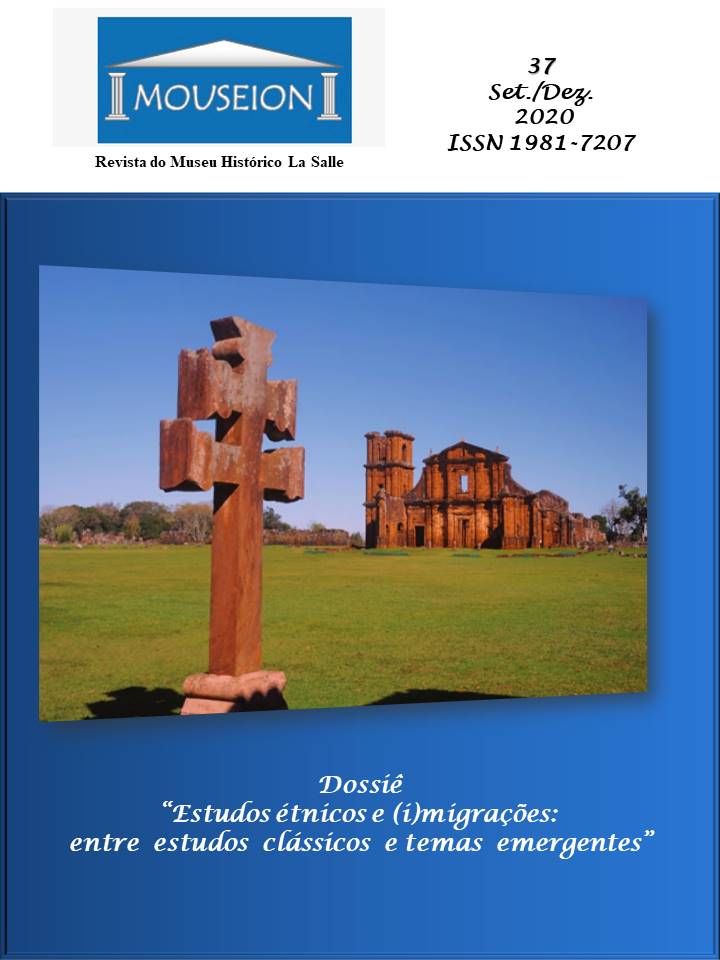História Social e territorialidade da colonização no Norte Rio-Grandense (1889-1930)
DOI:
https://doi.org/10.18316/mouseion.v0i37.7582Palabras clave:
História Social, Camponeses, Colonização, Norte Rio-Grandense, Primeira RepúblicaResumen
O presente estudo, a partir da revisão bibliográfica sob a perspectiva da História Social, problematiza as políticas de colonização, propriedade da terra e a organização social no Norte do Rio Grande do Sul, na Primeira República. O modelo de colonização, acesso e propriedade da terra adotado pelo Estado republicano rio-grandense na região em questão, inseriu o colono imigrante/descendente como elemento central, colocando-o em contato, disputa e conflito de interesses com os proprietários de terras, em sua maioria latifundiários, os posseiros, os lavradores nacionais/caboclos e os toldos indígenas. Nesse cenário, o Estado definiu como categoria social o “intruso”, que abrangia todos aqueles estabelecidos em uma posse de terras sem documentos comprobatórios. Portanto, nota-se que o maior beneficiário do período foi o latifúndio, que permaneceu intocável; e o Estado, que atuou como agente central na comercialização das terras públicas, seguido pelas empresas particulares de colonização. O artigo explora a trama social que tencionou a política do Estado e a sociedade camponesa estabelecida e formada na região.
Descargas
Publicado
Número
Sección
Licencia

O Periódico Mouseion, Revista Eletrônica do Museu e Arquivo Histórico La Salle em http://www.revistas.unilasalle.edu.br/index.php/Mouseion foi licenciada com uma Licença Creative Commons - Atribuição - Uso Não Comercial 3.0 Não Adaptada.


